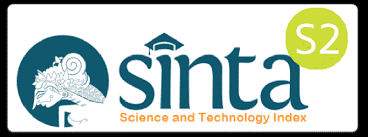Education, Regulation, and Associations As a Solid Foundation for Midwifery Professionals
DOI:
https://doi.org/10.35730/jk.v9i1.344Keywords:
Education, Regulation, Assosiation, Midwives professionAbstract
Health education is an important part of health development. Midwives are one of the health workers in the health system and have an important/strategic position in reducing MMR and IMR, as well as improving welfare. To prepare midwives who are responsive to the current situation and can overcome various complex situations faced by women throughout their reproductive cycle, midwives are required to be able to think critically, carry out synthesis-analysis, advocacy and leadership spirit that can only be produced by a quality and capable midwifery higher education system developing according to the progress of the times. To produce an independent and competent midwife, three main pillars are needed, namely education, regulation, and association. This study aims to analyze education, regulation, and association as the foundation of a solid midwifery profession. The method used in this study is to conduct an analysis and literature review of several supporting references. Several references cited and reviewed then made an analysis related to the topic of this study. Midwifery education is implemented to realize the learning atmosphere and learning process so that students actively develop their potential as midwives who have religious spiritual strength, self-control, personality, intelligence, noble character, and the skills needed for themselves, society, nation, and state in developing ability as Care Provider, Communicator, Community Leader, Decision Maker and Manager. Regulation is to promote regulatory mechanisms that protect the public by ensuring that competent midwives provide safe services for every mother and baby. The aim of this regulation is to support midwives to work independently within the scope of their practice. While the association is a vehicle for the midwife's profession to enable midwives to be able to voice their ideas and opinions to policymakers, educators, regulators, and other stakeholders.
References
Freeth D, Hammick M, Reeves S, Koppel I, Barr H, 2005. Effective interprofessional education. UK: Blackwell Publishing Ltd.
Furber C, Hickie J, Lee K, McLoughlin A, Boggis C, Sutton A, Cooke S, Wakefield A. 2004. Interprofessional education in midwifery curriculum: the learning through the exploration of the professional task project (LEAPT). Elsevier Journal. Dec; 20(4): 358-66.
Hammick M, Freeth D, Koppel I, Reeves S, Barr H, 2007. A Best Evidence Systematic Review of Interprofessional Education Medical Teacher. US: Best Evidence Medical Education (BEME) Collaboration.
Pengurus Pusat Ikatan Bidan Indonesia, 2014. Standar Kompetensi Bidan Indonesia. Jakarta: IBI
________________________________, 2013. Standar Nasional Pendidikan Kebidanan Indonesia. Jakarta: IBI
International Confederation of Midwives. Triennial Report 2011 – 2014. Diunduh tanggal 29 Agustus 2014. Tersedia dari URL http://www.internationalmidwives.org
Midwifery 2020 Programme. Midwifery 2020: Delivering Expectations. Cambridge: Jill Rogers Associates; 2010
Ryerson University, 2015. Interprofessional education in the midwifery program. Canada: Ryerson University. Diakses pada tanggan 24 September 2015 melalui URL
UNFPA. Midwifery around the world Part 1. 2011. Diunduh tanggal 22 agustus 2014. Tersedia dari URL: http://www.unfpa.org/sowmy/resources/docs/main_report/en_SOWMR_Part1.pdf
World Health Organization. 2013. Framework for action in interprofessional education and collaborative practice. Geneva: WHO Press, World Health Organization. Diunduh pada tanggal 5 Oktober 2014. Tersedia pada URL http://whqlibdoc.who.int/HQ/2010/WHO_HRH_HPN_10.3_eng.pdf
______________________.2014. Interprofessional education case study. Geneva: WHO Press. World Health Organization. Diunduh pada tanggal 28 September 2015.




